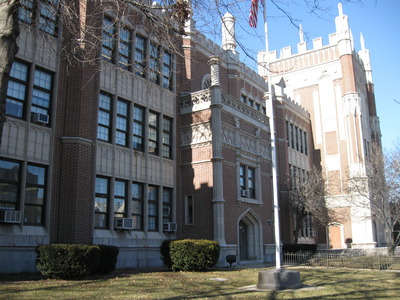The recently released annual state report cards on the Bayonne public schools showed marginal setbacks in some areas. Fortunately for the students, these were the result of changing state and federal rules, not a downturn in student performance, said Dr. Ellen O’Connor, assistant superintendent of curriculum.
With the approaching demise of the largely inadequate federal “No Child Left Behind Act,” state and federal educational experts appear to be seeking new direction in education. For local schools, this has meant a change of rules in mid-stream, and as with some recent test scores, changes in direction after tests were taken.
The Bayonne school district is comprised of 11 elementary schools and one high school, with testing conducted in grades 3 to 8 and 11.
Federal percentage requirements jumped in every testing area in 2008 from previous benchmarks set for 2005, O’Connor said. In some grades, school districts were expected to show more than 10 percent improvement over the previous year’s proficiency percentage.
The Bayonne School District’s mediocre performance in the state assessments reflected two distinct changes that altered perceptions of the district’s quality.
The No Child Left Behind Act adjusted the benchmark schools must meet to unrealistic levels, and Gov. Jon Corzine changed the percentage of right answers in state tests that qualified districts to claim students were proficient.
Dr. O’Connor said that in some areas, the state’s move to increase levels of right answers may have been accurate. But, she said, set the new scoring after the tests had been taken so that school districts had no way to prepare students better for the testing cycle.
Even with this double blow, the district’s students passed 940 out 943 areas, and in most cases, exceeded the state averages, and met or exceed state benchmarks.
“The idea behind this is to have students get the big concept first, and then the details.” – Dr. Ellen O’Connor
________
While O’Connor agreed that there are areas in need of improvement, the future of ratings is uncertain under President Barack Obama since federal standards will be revised, perhaps setting more realistic goals school districts can actually meet.
Developing new programs
Even with the additional concern about state aide to school districts, Bayonne is introducing new programs that will help increase proficiency.
One of these new programs is “Understanding by Design,” which addresses how teachers can meet some of the standards and developing curriculum to meet those goals.
“The idea behind this is to have students get the big concept first, and then the details,” Dr. O’Connor said.
This also involves upgrading its 55 curriculum guides to meet the newest standard, in-house workshops for teachers and principals with training teams in each school.
This marks a change in approach to a variety of programs that will have the district shy away from bringing in expensive consultants to train teachers. Instead, the district will train its own trainers, teachers who will then train other teachers in the district.
Last year, the district added literacy coaches paid for by an I.D.E.A.L. Grant. This year, the district is seeking to develop its own coaches and has asked for teacher volunteers to become literacy and math coaches.
In this, the district will send master teachers to workshops, who will then return to the district to train teachers here.
“The coaches will model a lesson for the teacher in the classroom so the teacher can see how to do it,” Dr. O’Connor said.
Funding for some of these programs will come out of federal grants.
After three years of training teachers, the district has implemented the Collins Writing Program in grades pre-K to 12.
Tools for meeting the stiff new standards can vary, from simple implementation such as giving flashcard rings to every student for aiding in mathematics, to creating new programs, such as the recently proposed academy system that would allow students to specialize in fields such as fine arts, business, or science. Upgrades in technology, such as increasing the number of Smart Boards – computer generated black boards – are also part of the mix.
The school district recently began to create new web-based communities for students and faculty, which will allow students and teachers access to information and discussions from outside the classroom and will contribute to collaborative efforts.
Al Sullivan may be reached at asullivan@hudsonreporter.com.
